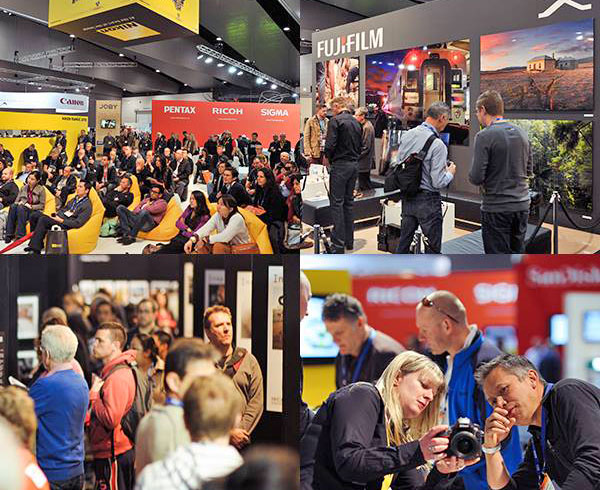A few short years ago the photographic industry was served by a range of support associations covering commercial distributors, retailers, prolabs, professional photographers and keen amateurs.

They say the past is another country, but in putting together this broad overview of where we have come from, it’s startling to see just how different a country, and in such a relatively short period of time. As an industry – profession photographers, specialist retailers, prolabs and distributors – where we are today is barely recognisable from where we were just 10 years ago. Just six years ago the industry held a multi-faceted event at the Melbourne Exhibition centre which attracted around 17,000 people over three days – most paying an entry fee – and included the annual APPA awards. Those days have gone. They were gone well before Covid put its spikey foot through the scenery.
 One by one, most of the industry associations have folded, leaving only the venerable camera club movement and its national umbrella, the Australian Photographic Society, and the professional photographers association, the Australian Institute of Photography, still standing.
One by one, most of the industry associations have folded, leaving only the venerable camera club movement and its national umbrella, the Australian Photographic Society, and the professional photographers association, the Australian Institute of Photography, still standing.
The first casualty ‘in the modern era’ was PMA, the Photo Marketing Association (Australia) which was the Australian offshoot of US-based PMA International, which itself had a history going back to the 1920s.
This US affiliation was a strength, and then ultimately a weakness. The resources of the US ‘parent’, such as retailer and photo printing staff training programs and the wherewithal to set up a well-staffed Australian office, were critical to PMA’s success. Membership fees were kept quite low. (But is was perhaps the inspired choice of the great Les Brener as founding director which enabled PMA in Australia to initially prosper.)
However when the bloated PMAI – which had grown fat on the revenue of the giant PMA Las Vegas trade shows – hit financial trouble in the US in 2024/2015, it cleaned out the bank accounts of the Australian branch, cancelled the office lease and wished us all the very, very best in the future.
Suddenly the specialist retailers, picture framers (PPFA), colour labs (APCL) and schools photographers (PSPA) – groups which were affiliated with and operated via the executive office of PMA in Australia – were cut adrift.
Of those groups, the APCL is now inactive, the PSPA was incorporated into the AIPP and the PPFA is still ticking over as a chapter of PPFA International.
(There was also a New Zealand branch of PMA which was more financially independent. The Americans weren’t able to close its accounts and take its cash, which provided the seed money for the NZ industry to form another retailer association.)
 PMA for decades worked in close partnership with distributor group PICA (Photo Imaging Council of Australia) – later renamed IDEA – to run the annual trade exhibition and retailer conference, with PICA running the exhibition and PMA the seminars and workshops. (In 2007 PMA gained control of the exhibitions from PICA/IDEA for a few years.) Venues alternated between the major exhibition halls in Sydney and Melbourne and occasionally Brisbane. Conference-goers ran to 300 or 400 delegates, which is unsurprising given that the Kodak Express chain of minilabs alone numbered more than 700 outlets in its heyday, through the late ’80s and 90s.
PMA for decades worked in close partnership with distributor group PICA (Photo Imaging Council of Australia) – later renamed IDEA – to run the annual trade exhibition and retailer conference, with PICA running the exhibition and PMA the seminars and workshops. (In 2007 PMA gained control of the exhibitions from PICA/IDEA for a few years.) Venues alternated between the major exhibition halls in Sydney and Melbourne and occasionally Brisbane. Conference-goers ran to 300 or 400 delegates, which is unsurprising given that the Kodak Express chain of minilabs alone numbered more than 700 outlets in its heyday, through the late ’80s and 90s.
If we ‘follow the money’ – or in this case lack of it – it would seem the demise of the international and Australian PMA was due to falling membership and the reliance on one big event every year – the annual exhibition/conferences. These were expensive to run – hiring the bulk of the Sydney Exhibition Centre’s conference rooms for four days doesn’t come cheap. (Nor did the plethora of PMA executives who flew in from head office in the US for the week!) Without a full complement of delegates, it wasn’t hard to lose a hundred thousand dollars or so, rather than add to revenue. At the last show, in 2015, PMA did not participate.
Professional photographers were a vital part of these annual get-togethers as both keen and highly valued exhibition attendees and via the annual judging of the Australian Photographer of the Year awards, capped off by a gala dinner.
The bigger photographic companies vied for the biggest and most flashy stand. At one stage a spending limit was introduced because the richer companies – the Kodaks and Canons – were spending crazy amounts of money on stand space and design. The dominant brands also sponsored high-profile (ie, expensive) keynote speakers for the convention.

The trade shows themselves, in their later iterations in the 21st century were open to the public and called variously The Digital Playground (not to be confused with the adult website) and then The Digital Show. They generated hundreds of thousands of dollars a year which was used to run the IDEA office, which among other things provided a weekly newsletter; lobbied to government on issues of importance like grey marketing and GST; for many years ran a syndicated weekly photo tips column going out to suburban and regional newspapers; and an ongoing marketing campaign (‘Print It Or Lose It’) to encourage consumers to get their photos printed. (Oh, and organising a major national annual trade show.)
The IDEA board comprised the industry’s leading executives, and there was considerable prestige invested in the role of President. Somewhere along the line, perhaps as the annual trade/consumer shows became less interesting to the members, IDEA became less relevant and membership, which included most of the local distributors large and small, dropped off. When Canon dropped out, the writing was on the wall.
All hat, no cattle
When Paul Curtis, the faintly-praised driving force behind IDEA, retired in 2012 his replacement proved what might be called ‘a courageous choice’. As we wrote at the time: ‘Her selection and appointment was strongly endorsed by then IDEA president, Dave Marshall (then Fujifilm managing director) as part of a push to expand the association from one focused on promoting photography, to digital entertainment and “convergence”. This also involved a change of name from “Photo Imaging Council of Australia” to “Imaging and Digital Entertainment Association”.’ It was as if the leaders of the photographic industry had lost confidence in photography.

IDEA (ie, Dave Marshall) had decided that what the industry really needed was an all-singing, all-dancing consumer electronics show with a bit of a focus on imaging. The young and stylish new CEO was thought to be the person to deliver it. She resigned in 2013, about eight months into the job and five months out from the 2013 Digital Show and flew back to to the USA, leaving the previously purposeful association in disarray it never really recovered from.
That was probably the pivot point for IDEA. There was never another permanent executive director appointed. The shows were put on a bi-annual basis. Once. Major camera brands dropped out and the CE/IT companies declined to play. The last show was in 2015, after then IDEA president, James Murray, cancelled the 2017 event with ‘no plans for future events of this kind’. That was it, really. The IDEA ‘Grapevine’ newsletter continued in a manner of a fashion until 2019. There was still cash left in the IDEA bank account but membership was down to a handful and no-one, not least the board under the extended and enervated presidency of James Murray, seemed particularly interested in any form of renewal.
In a brassy decision we said at the time didn’t seem to pass the ‘pub test’ (and still doesn’t) the four or five IDEA Board members divvied up the remaining $300K in the IDEA kitty among the four or five remaining members. Their own companies. It’s now effectively shut down.
 The other group of significance which has gone by the wayside is the ACMP, established in 1991 as an commercial photographers’ break-away group from the AIPP. With membership down to around 250, it merged with the AIPP in 2015. For a while the AIPP website became the AIPP + ACMP website, until it was fully absorbed in 2017, with former ACMP members joining the Commercial Council of the AIPP.
The other group of significance which has gone by the wayside is the ACMP, established in 1991 as an commercial photographers’ break-away group from the AIPP. With membership down to around 250, it merged with the AIPP in 2015. For a while the AIPP website became the AIPP + ACMP website, until it was fully absorbed in 2017, with former ACMP members joining the Commercial Council of the AIPP.
The other major loss was the Australian Centre for Photography in Sydney. In 2014, it sold the large building which housed it in Oxford Street, Paddington, for a relative pittance ($5 million). In 2016, the ACP moved out , the site was developed, and the developers made many millions of dollars. For some reason which is yet to be explained it lost both state and federal funding from 2021 onwards. It’s highly unusual for government arts funders to pull the rug from under an institution which had been operating for 45 years. Most of the funds from the building sale are gone. The CEO, Pierre Arpin, put its demise down to the advent of the smartphone: ‘The world has changed and the advent of the smartphone and the iPhone is that everyone is a photographer,’ he said, adding that ‘…maybe photography became so prevalent that it’s lost its special cachet.’ Or maybe the ACP, once the focal point for photography in Sydney, simply lost its mojo. Maybe if the management put more effort into those vital government grant applications its doors would still be open.
And now there is just one single group dedicated to any aspect of the business of photography in Australia, the AIPP. The demise of all those other groups was not inevitable. Most other industry sectors still have a voice, while the photo industry is mute. There were heroes and villains and people whose roles – both voluntary and salaried – dictated they should have given more of a damn. Competence and passion counts. The ability to convey a vision which engages members. A decent business plan.
But is all the above a cause or an effect? At the end of the day, unless enough of us actually see some value in, and want the kind of unity and relevance well-supported representative groups deliver, we simply won’t have them.
There is one other kind-of Australian photo industry ‘institution’ which is still standing – and that’s Inside Imaging. We have provided a chronicle of the industry for the best part of 20 years now and, with less to bind the photographic industry together than was the case in the past, and in the absence of any other source of history or archive, its corporate memory.
We have come in for some criticism lately for the scrutiny we have been applying to the AIPP finances and constitution. But we’ve seen this kind of soap opera before. It would be great if this one had a happy ending.
– Keith Shipton





The problem with the annual “PMA” trade show was that it was “owned” by PICA and “no” IDEA so all the money didn’t go to PMAI in fact PMA Australia was dependant on funds from Jackson to operate. PMAI had become a greedy with costs of vendors booths etc. Canon was the first to withdraw and they were a big drawcard and payer. Up to 2009 they were still holding events, annually paying to fly committee members and directors in to Jackson from all around the US and the world. They were also paying staff and entertaining very well, members involved have great memories of this.
PMAI Jackson was in awe in the way PMA/PICA Australia ran their events, allowing consumers in on the Saturday/Sunday etc. They thought they could do the same in the US opening up to consumers, that was at the end of the Jackson HQ days, operating these events at a loss speeding the demise of PMAI.
“PMA” NZ with a different name is still alive from what I hear but I’m not sure how active they are these days.
I wish I had more time to contribute to this right now.
I do think your summation of the history and key points are largely on the money. Principally, the then leaders of IDEA either didn’t truly understand or lost focus on what they had – lots of people passionate about photography. Likewise, the collapse of PMIA was avoidable.
That’s not to say it was easy for them or that it wasn’t ultimately headed towards collapse. As the traditional concept of photography and its distribution broke down, the forces that bring retailers, suppliers, and other participants with common interests together, went with it.
Photoimaging, in the truest sense, has never been in better shape. More people are recoding the world with pictures than ever before, and the current generation is more visually literate than all before them. But the money has fragmented away from a specific and identifiable photo industry.
Professional photography has been whacked by the capability of new digital capture in all its forms. This has taken away enough of the skill gap between practised professionals and amateurs for photography services to become commoditised. Some still stand tall, but it’s a smaller pool. Add to this the devaluing of images by mass photo libraries and a lack of respect of copyright, and enough genuine IP protection in images, and we have what we have now in pro-image-making.
It is worth saying that while what we’ve lost is very sad, if you love photography, there are lots to be excited about. The opportunities for commercial benefit are much fewer. However, they still exist in services, travel, education, and even equipment—all driven by the love and passion for the art and craft of photography.
Hello Keith!
I love reading Inside Imaging. As PMA International President from 2010-2012 I had an interesting view of the photo industry. There were a lot of moving parts to get to where the industry is today. Corporate greed, bankruptcy and general lack of profit at retail drove the association into oblivion. Company’s like ? and ? made decisions to leave the trade show in the US but spent time making commitments they never intended to fulfill. Next thing we knew one company would not come unless this company came and that company would only commit if someone else came and so on and so on it went with dozens of large company’s involved. Even with signed contracts and down payments most choose to walk away and the result started the final kill off the associations and independent retail industry. When that did not happen at the speed the camera manufacturers wanted profit was squeezed out of the retailer with reduced margins and goofy hard to follow rebates that seemed to be designed to run the retailer out of cash and business. Without enough independent retail locations in Australia and the US there was no need for a trade show any more. Both PMA International and PMA Australia did everything they could but when 75% of sales came from a small number of retailers 10 year later here we are.
Cindy and I are grateful for the time we spent in Australia and NZ. I was just looking at our pictured to your part of the world today. Your countries made it an amazing trip and your hospitality will never be forgotten!
Brian Wood
Photovision
Salem Oregon
Hello Brian – great to know you are still reading our squalid little rag! (Must say when I saw your name under this particular story I went ‘Oops, forgot we had US readers!’) That whole period when the photo industry suppliers were seduced by the CE retailers were certainly stormy waters. PMA’s Peter Rose and Barbara Bryan down here were making a pretty good fist of developing a suitably more modest but relevant local photo association model before the great shuttering occurred. It would have been good if at that time IDEA had reached out ‘across the aisle’ instead of doing a dog in the manger act. If onlys, eh? I understand the APCL was very generous during that time but when the pin was pulled, that was that.
Good to see Keith that your article has generated a quality of responses that makes great reading. During the past 24 hours additional valuable input input has been sighted from Terry Rimmer, John Swainston, Stan Kessanis and John Koens all well recognised industry stalwarts. It seems we are all interested in an accurate rendition of history.
Where to start… Brian and Stuart were right, the manufacturers saw specialty retailing as a shrinking percentage of the market and hence the marketing dollars flowed to consumer electronic retailers and mass merchants. Trade shows to them became an expense rather than an opportunity. PMA Australia saw consumer education as the income generator as it also addressed the camera phone user . That was our vision, however it was all too late.
From the time PICA agreed to allow PMA to run both the convention and Exhibition in 2006, we made money, provided a world class trade convention and trade show and promoted consumer attendance and education via PMA members. It worked very well for over 5 years with annual attendances topping 21000 !
PICA then decided to take over the event with Katherine Singson managing. The show was disbanded within a couple of years.
There was a degree of “angst” between the two organisations (the reasons for another day)
however PMA was providing a highly cost effective small management team (John Bourne was key) to manage the show and whilst the end result may in time have been similar, I believe we would have transitioned to a consumer focused education model .The business case had been developed (thanks Barbara Bryan) finalised and tested successfully.
Having said all that as Phil,Terry ,Brian and many others would attest PMA did provide “the glue” over many years and provided many in the industry some great friendships and memories.( Les would be proud!)
I will leave the industry comments to those better qualified than I, but having been an integral part of Photo Retail marketing since 1988 (where did those 33 years go) I always feared that the shift in strategy when major retailers chose a policy of “Lowest prices are just the beginning” we were inevitably going to see healthy margins and profits disappear across all channels until any Trade Shows, Association memberships, Industry functions and any activity that required funding pretty much disappeared. Participants in many industries shrank in numbers, mature, experienced retailers opted for early retirement instead of being forced into unrewarding price wars with Major retailers. My memories of all those Gala dinners where competitors would mix socially and share pleasantries as we were all “doing nicely” in an industry we were passionate about. It was a Photo Industry family and we all belonged to that family.
Now, with Covid, we are readjusting again, with many working from home, online retailing become a habitual pastime, empty offices possibly never returning to capacity, landlords with empty commercial properties, home prices reaching absurd levels of extraordinary debt… it’s just not as rewarding as it used to be under these unprecedented pressures. So we reminisce.